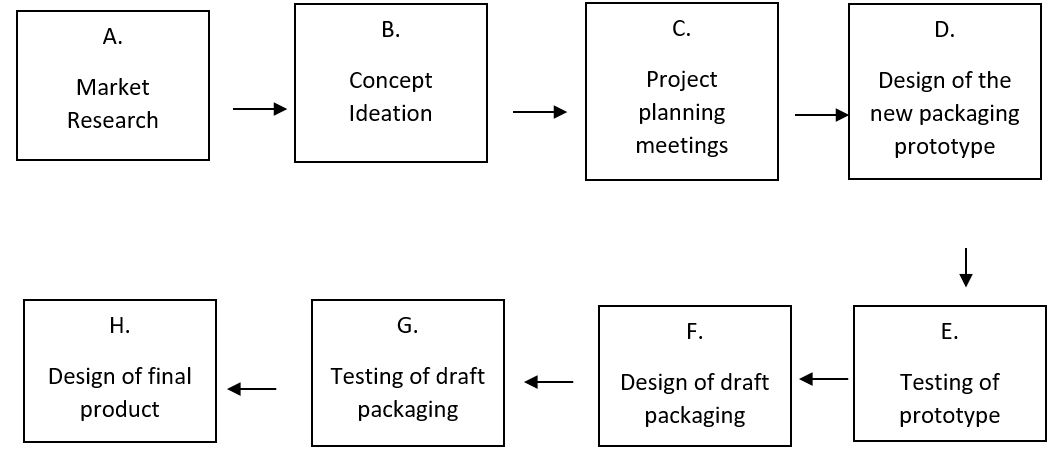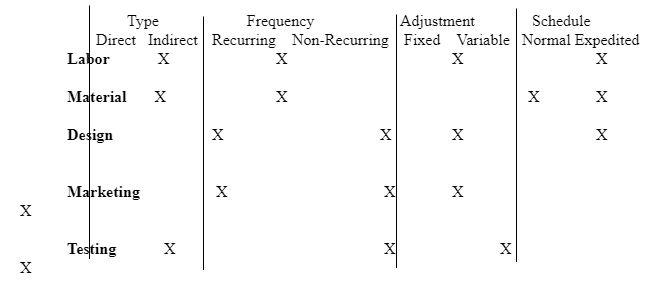The identified project is the development of new packaging options for Tetra Pak. The project is critical at this time because a majority of the packaging developed by Tetra Pak does not adhere to environment-conservation policies. The company, through its Corporate Social Responsibility, has been trying to lower the chances of its products polluting the environment in one way or another. However, whereas there can be mitigations to ensure that Tetra Pak products are not littered in the environment, the company must manufacture products that can be recycled easily. Some of the materials that Tetra Pak is using currently include plastic and carton. The suggested product is a recyclable and environment-friendly packaging solution that can be customized based on the size of the produce.
Arguably, the packaging is one of the most affected elements of manufacturing due to global warming and other concerns regarding environmental safety (Magnier and Schoormans, 2017). Plastics have been used since early industrialization to package food items yet are identified as the number one pollutant of both land and sea. Indeed, a significant number of companies currently do not use any form of plastic for their packaging needs (Esmailpour and Rajabi, 2017). However, the world is still to agree to the use of alternative and more natural occurring forms of packaging. This shows the importance and need of this suggested project by Tetra Pak. It is better for the company to slowly transition from their plastic packaging materials to ones that can be recycled and degenerate to protect the environment before drastic measures are put in place that will force the company to do the same.
Project Plan
Several elements have to be discussed to ensure a successful project plan. The first element is the human resources plan. Because the proposed project is to be conducted within Tetra Pak, there is no need for extra human resources. Sanchez and Haas (2018) argue that human resource is a critical part of any task as they are the people who deliver on the project. Part of the human resources plan, however, should include the training of the staff involved on the alternative ways of packaging that the company can use. Additionally, more training will be needed for the entire staff at Tetra Pak to understand the need for the change and details about the new project. All the staff must be in agreement with the idea of alternative packaging for the project to be a success.
A communication strategy is also required to ensure that all the parties involved are knowledgeable of the changes the company is about to undertake. McBride (2016) explains that many projects do not consider proper communication strategies as they initiate a project. One advantage of a flexible communication policy is that it aids in the managing of vital information for all parties involved (Papke-Shields and Boyer-Wright, 2017). Additionally, it ensures that the project management team has a viable crisis management plan in the event of unforeseeable challenges (Marier-Bienvenue, Pellerin, and Cassivi, 2017). It is also important to mention that a project plan has to consider a stakeholder management policy. In the suggested project, there are three main stakeholders namely, the employees, the shareholders, and the public. Their needs must be considered in the plan to come up with a product that satisfies all the mentioned stakeholders.
Tetra Pak should consider a risk management policy to both protect the brand and its stakeholders. Sanchez and Haas (2018) argue that a risk management policy provides a company with guidelines on how to react if a challenge presents itself in a way that does not harm the bottom line. Finally, a viable work plan is needed to show how the project will run from the beginning to completion. The table below shows the work breakdown structure for the proposed project.

The presented work schedule plan does not capture everything needed for the project to be a success. However, it has highlighted the important steps that are required. It is essential that the different teams that are formed to work on these different elements also develop their work plans to capture all the relevant steps. From the plan, it is evident that the first step of project management includes proper planning. This is usually done through administration activities and meetings with all the stakeholders involved in the project. Critically, market research should be done before this level, and the results of the study should be used to make important decisions about the next steps of the project. Additionally, monitoring and evaluation are crucial in the project as they help the company understand the usage of their products within the target market.
Project Schedule
Each of the activities mentioned in the work breakdown structure is linked to the other. McBride (2016) argues that a project schedule is critical in understanding the different relationships that the project activities have with one another. Additionally, it helps to prevent doubling of work as everyone will know what is expected of them. The table below highlights the project schedule for the launch of the alternative packaging options for Tetra Pak.

The presented type of schedule is referred to as the serial sequential logic. This is because each step identified has to happen before the next. Therefore, there is no way the concept ideation can happen before the market research. The third step, project planning meetings, was identified in the work breakdown structure (WBS). The only difference between the schedule and the work breakdown structure is that the schedule is more detailed than the WBS. This is because the WBS gives an overview of how work will be divided. However, the schedule shows how the different key activities will happen to ensure the successful launch of the final product. Ramisovich, Ivanovna, and Ramisovna (2017) argue that the teams that are involved in the different work streams in the WBS should have their schedules. These plans should identify the paths and the nodes of the task at hand and should be shared with other teams to ensure seamless working.
Budget
A budget is critical in project management for purposes of cost management, which in turn touches on cost estimation, control, and accounting. The proposed project will have both direct and indirect costs and the following table highlights the cost classifications.

The cost categorizations show that a majority of the charges will be normal costs that the company already has planned. However, some extra expenditures will include the marketing and testing elements of the project. One can justify both these extra expenses in two ways. The first is the fact that proper marketing of the use of alternative packaging will enhance the brand’s presence among the target market, thus, attracting more clients. Secondly, the testing is critical as it allows the company to know whether the target market appreciates the change in packaging or not. The production activity covers both labor and material (direct) and electricity, water, and other similar costs as the overheads. The production unit has the biggest budget as Tetra Pak is a large company and has to produce enough packaging materials for all its products. Testing has the least budget as it only happens to a select few from the target market. Below is the project budget with estimated costs for the different items (the costs are in USD).
Reference List
Esmailpour, M. and Rajabi, A. (2017) ‘The effect of environment-friendly attitude on consumer perception of usability of product packaging’, Journal of Applied Packaging Research, pp. 32-44.
Magnier, L. and Schoormans, J. (2017) ‘How do packaging material, colour and environmental claim influence package, brand and product evaluations?’, Packaging Technology and Science, 30(11), pp. 735-751.
Marier-Bienvenue, T., Pellerin, R. and Cassivi, L. (2017) ‘Project planning and control in social and solidarity economy organizations: a literature review’, Procedia Computer Science, 121(2017), pp. 692-698.
McBride, M. (2016) Project management basics: how to manage your project with checklists. Berkeley, CA: Apress.
Papke-Shields, EK. and Boyer-Wright, MK. (2017) ‘Strategic planning characteristics applied to project management’, International Journal of Project Management, 35(2), pp. 169-179.
Ramisovich, KB., Ivanovna GK. and Ramisovna, DO. (2017) ‘Conceptual basics and mechanism of innovation project management’, European Research Studies Journal, 20(2B), pp. 224-235.
Sanchez, B. and Haas, C. (2018) ‘Capital project planning for a circular economy’, Construction Management and Economics, 36(6), pp. 303-312.